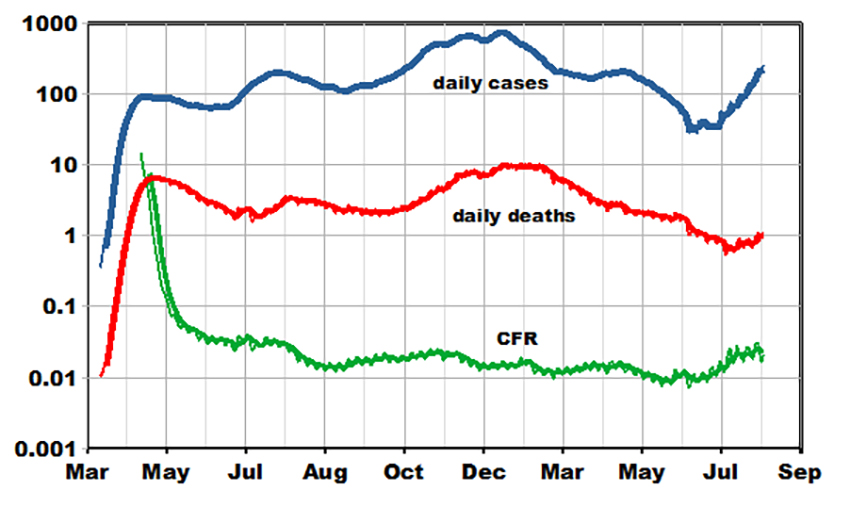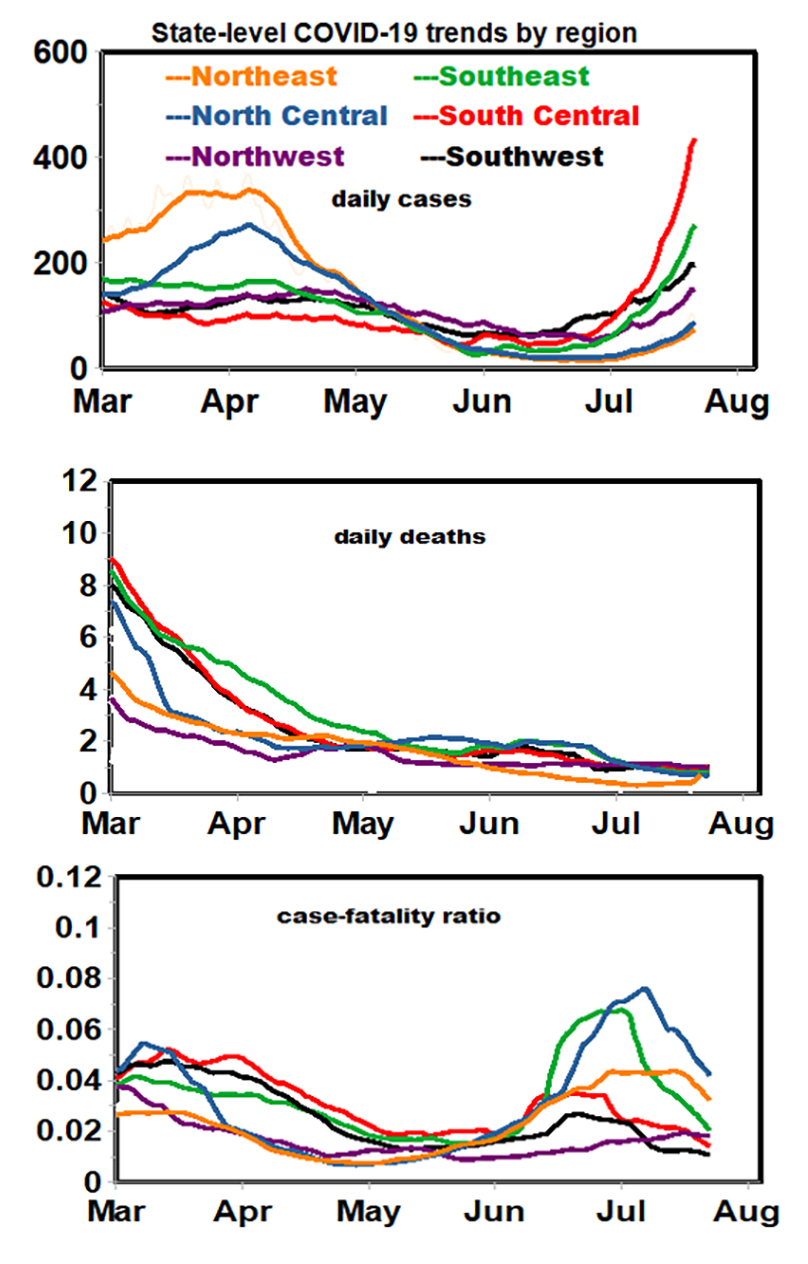National Trends.
Figure 1 presents the national trends in daily COVID-19 cases (infections), deaths, and the case-fatality ratio (CFR).[2] We normalized the count data by dividing by the relevant population and used a logarithmic scale because of the exponential nature of an epidemic. CFRs are lagged, based on the ratio of recent deaths to cases during the previous month. We used 10-day moving averages to smooth out random variations.
 Figure 1. National trends in COVID-19 trends, deaths, and case fatality ratios based on 10-d moving averages.
Figure 1. National trends in COVID-19 trends, deaths, and case fatality ratios based on 10-d moving averages.
The most apparent large-scale features are that deaths lag behind cases and that CFRs are decreasing slowly. The initial exponential growth of the pandemic in spring 2020 reflects the healthcare system struggling to cope with increasing demands and the naivete of the general population to the virus, after which exposure avoidance measures apparently took hold. The trend in COVID-19 cases resembles a series of 5-month “waves,” with cases peaking at about 700 per day per million population; 230,00 for the whole US. The current national rate is about 100,000 per day and increasing.
Trends in deaths parallel cases; national daily deaths peaked at 3300, and CFRs show a gradual decrease of about 30%. The June-July uptick in CFRs results from cases decreasing earlier and more rapidly than deaths. About 10% of the population has now been infected, and 614,000 have died, which amounts to about 16% of 2019 all-cause deaths annually. The long-term national average CFR is 0.0175.
The upward trend in cases that began in June is of particular concern, in part because of the accelerated increase, but more so because it appears that we are losing the battle between vaccinations and spreading of the more contagious delta variant. Vaccinations began in February, peaked in early April, and then declined rapidly by June. By contrast, the proportion of delta variants started to increase in late June and is now approaching 100%. Daily deaths lagged cases but show a lower rate of increase.
Recent Regional Trends.
We examined regional differences used over the last six months using linear scales. The total range in cases varied from about 30 to 800 daily cases per million population. By mid-May, there were essentially no regional differences in either cases or deaths. The current regional disparities in cases are quite extreme, much less so for deaths. The most significant disparity is the 300-case decrease in the Northeast compared with a 400-case increase in the South Central. (Figure 2a).
 Figure 2. Six-month trends in COVID-19 statistics by geographic region.
Figure 2. Six-month trends in COVID-19 statistics by geographic region.
Discussion.
We have previously shown that COVID-19 cases and deaths can be correlated with many geographic, demographic, and personal characteristics such as population density, ambient air quality, household income, race, age, political affiliation. Given the limited time span of the pandemic, these potential predictors must be considered invariant; they might explain regional but not temporal variations. Until April 2021, we could have considered the virus per se to be unchanged, leaving personal behavior as the source of the large temporal changes observed. By July, the delta variant began making substantial inroads, with no increase in personal behaviors that might mitigate exposure, such as masking, social distancing, and avoiding indoor crowds. This trend makes vaccination even more important, as shown by the increased rates of daily infections, and some public health officials are calling for renewed masking.
The continued spreading of the more contagious delta variant with reduced vaccination rates portends steep increases in infections, and we expect COVID-19 deaths to follow suit in the coming weeks. Unfortunately, the available data show no signs of abatement.
[1] Definitions of regions can be found here
[2] Data can be found here



